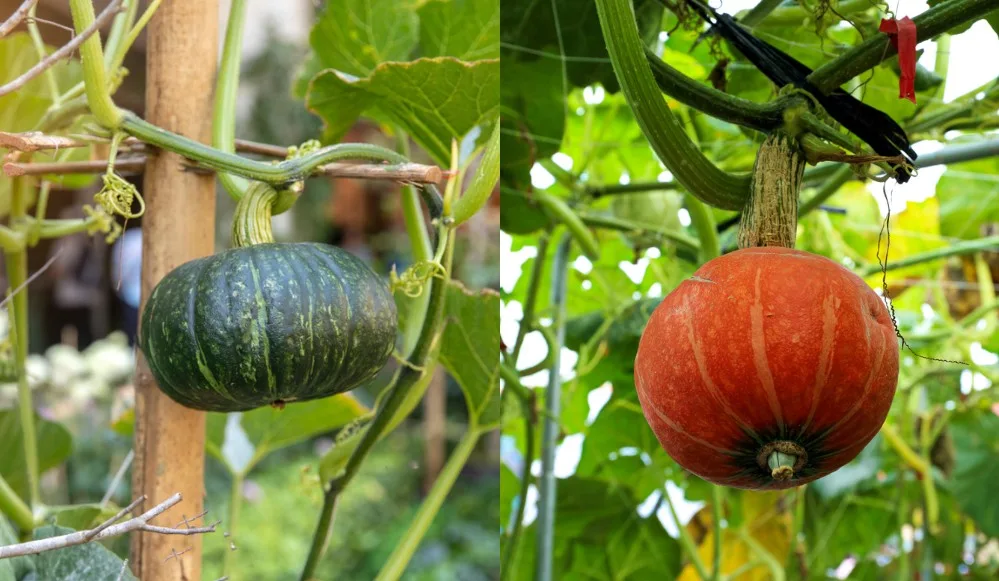
Those of you with small gardens and a big love for squashes, beware!
Squashes will sprawl and crawl, setting their tendrils to whatever they can latch onto first, whether it be a garden fence or other, more tender garden crops.
Yet, squashes can be trained to grow up and behave. But it will take some preparation on your part – with the support of a sturdy trellis, so that they can do their part in feeding you with a steady supply of squash throughout summer and fall.
Benefits of growing squash vertically
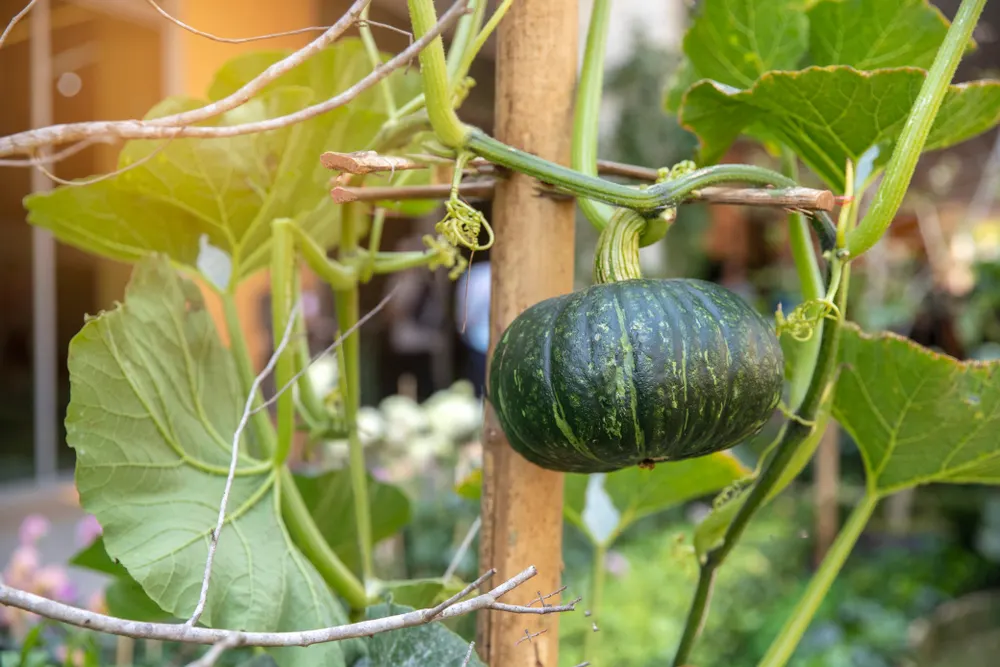
Vertical gardening certainly has its advantages, especially when you are dealing with smaller spaces.
Growing squashes vertically allows you to:
- Grow more squash in less space
- Keep the fruit off the ground, which in turn:
- allows more air-flow between the leaves
- decreases risk of disease, such as mildew, blight and bacterial wilt
- prevents them from being eaten by small animals
- Make harvesting easier
- Reap cleaner fruit with fewer blemishes and/or yellow spots from laying on the ground
- Beautify your landscape
If you are familiar with trellising grapes, then trellising squashes will come easily to you.
However, if this is your first garden trellis experiment, never fear, squashes are a non-pretentious and uncomplicated kind of crop to work with.
Plus you have the added benefit of seeing the growth week by week. It is a fantastic sight!
Does squash need to be trellised?
As long as you have plenty of garden space, it is perfectly fine to let your squashes roam freely across the ground. Though one plant can easily extend to 15′ or more!
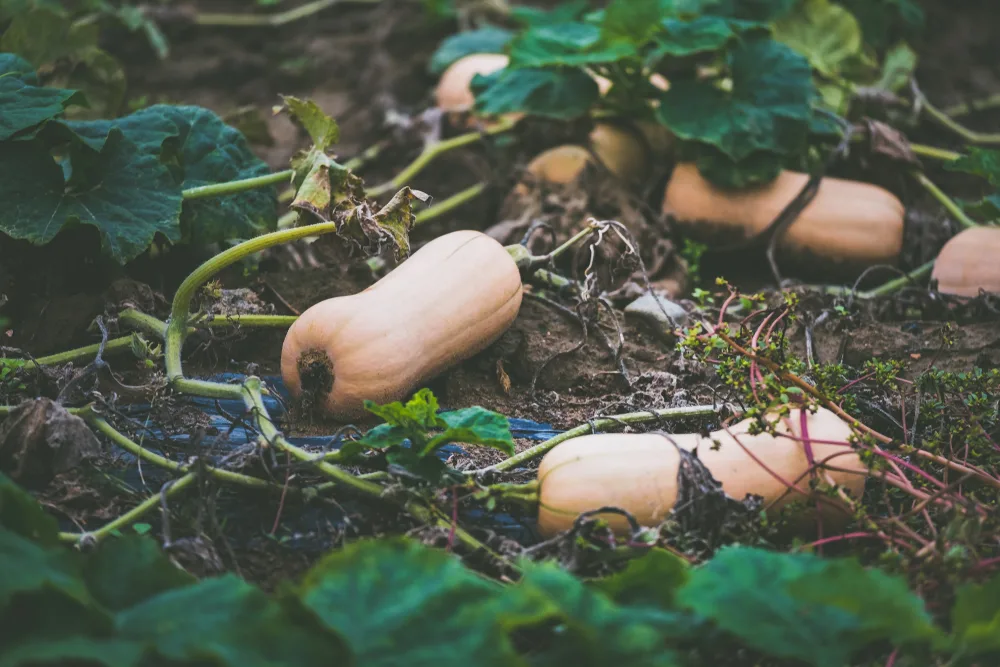
Not every squash can be trellised. The largest squashes such as Hubbards, Calabazas and pumpkins, due to their size and weight are best left to grow on the ground. If you do have the ground space to grow them, definitely do!
You can store the mature squashes for several months in a cellar or cool storage. And it is an excellent way to make sure your pantry is fully stocked for the winter months.
Any squash producing individual fruits over 10 pounds each, is a good candidate for staying put, rather than making it be airborne. Yet, there are plenty of smaller squashes to choose from which are perfect for trellising, which you will find out about in a minute.
At some point, if the trellised fruit is heavy, as is the case with growing more sensitive-skinned melons, you may want to provide a sling, just in case the stem breaks before the squash reaches maturity.
Options for growing squash vertically
With your heart set on growing squashes vertically to create space for a bigger harvest, you now have to make a choice of how to support your squash.
Your choice of trellis will depend on several factors.
- Materials and tools – what you have on hand, or can easily procure
- Money – how much you are willing to spend
- Skills – whether you are a DIYer or an online shopper looking for a quick solution to trellising squashes
- Size – how much space you have to dedicate to growing squashes vertically
With all of the above taken into consideration, you’ll also need to make sure that your vertically grown squashes receive plenty of sunlight. Think about the location before planting to ensure they will get all that they need.
Arbors can be made on the spot, or purchased ready to assemble. They can act as a beautiful gateway into your yard or garden.
Pergolas are a bit more serious to design and construct, but if you have the space, they are definitely worth the investment. To grow squashes, you may need to build in one side with additional supports for the squash to climb.
An A-frame trellis is a less expensive option to create two slanted walls for growing squash. It has the added benefit of being mobile, so that you can move it yearly. This is a great store bought option.
Other ways to support vertically growing squash include growing them on a fence, or in a fruit tree with lower branches that is either dead or alive.
We’ll share some photos throughout this article and lots more at the end with some ideas for growing squash vertically.
Here’s an easy way to build a butternut squash garden trellis.
How do squashes climb the trellis?
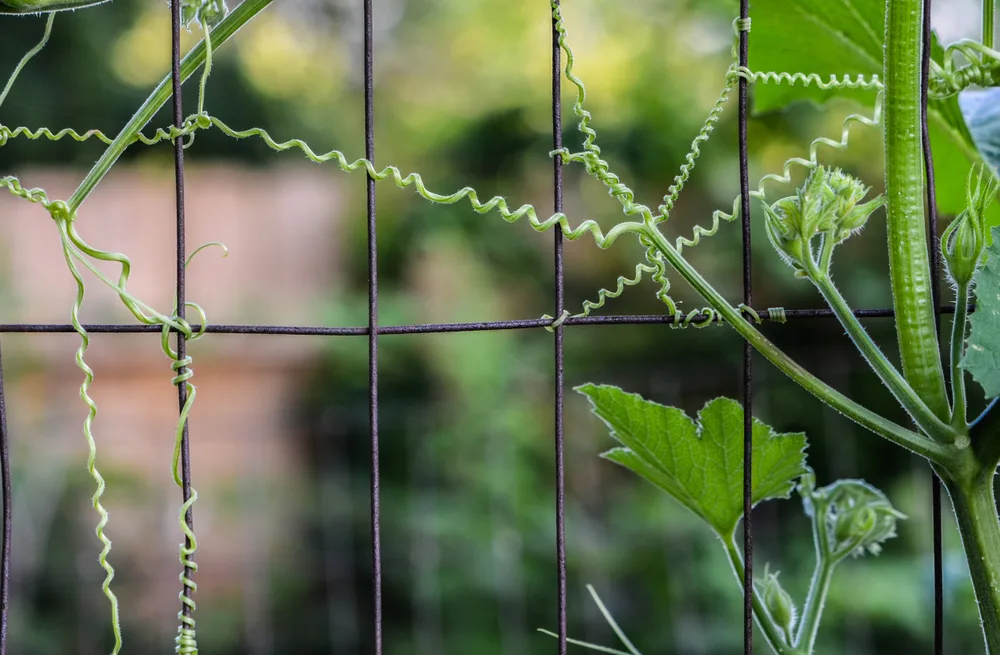
It isn’t the vines doing so much of the work as it is the tendrils working their way up. The tendrils being side shoots that wrap around whatever is in their way.
On the ground this can be grasses, herbs, onions, and other precious garden crops. Up in the air, they will wrap around the support system that they have been given, whether this be rope, wire or wood.
Training squash vines
Squashes prefer to travel horizontally, so how can you get them to stand upright?
We’ve already talked about the benefits of vertical gardening, and you’ve seen that it is indeed possible to get squashes to grow up, but what is the secret?
It is not in wishing that they could and will climb. You, in fact need to provide the slightest assistance.
As your squashes begin to grow, gently tuck the vines through the trellis supports, weaving them very loosely and carefully. Then the tendrils will take over some of the work, supporting the vine every chance they get.
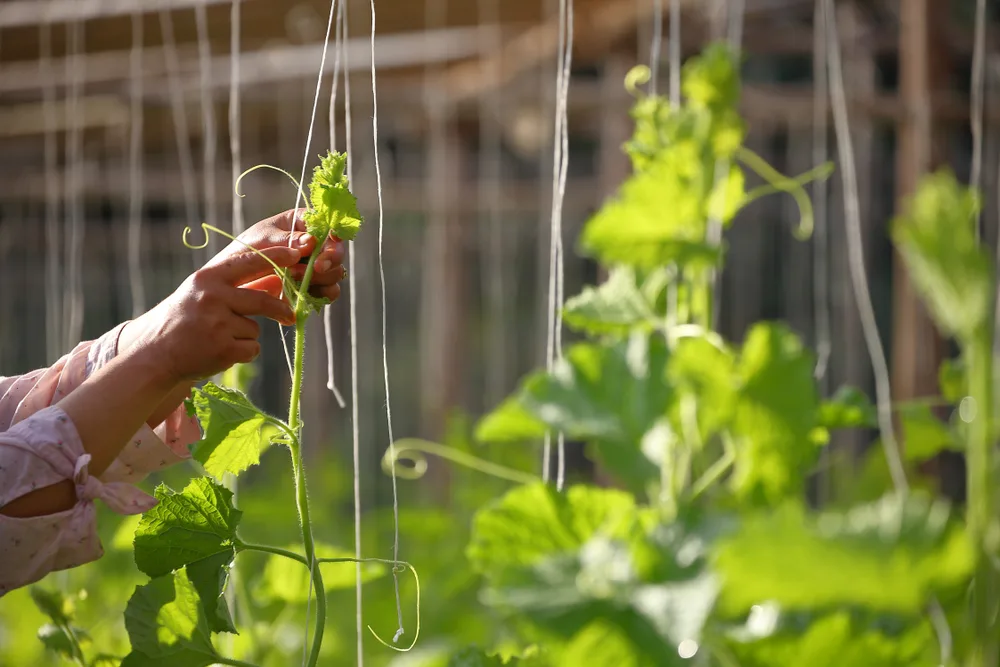
You’ll also need to use jute twine to tie the vines loosely to the frame. As the vine grows, you can keep adding more, to achieve the coverage you desire.
During the hottest days of summer you may need to check the growth every few days and adjust your ties accordingly.
What kinds of squash can I plant vertically?
In a very short answer, you can trellis just about any squash with a vining tendency.
Bush varieties will not cooperate, no matter how hard you try. The best way to find out what you have, is to read the back of the seed packet. If you keep a garden journal and save your own seeds, be sure to record not only the planting times, but the growing habits as well. This is really important if you grow several varieties, as forgetfulness happens.
Both summer and winter squash varieties can be trellised, so let’s look at the many delicious options.
Trellising summer squash
Summer squashes grow quickly, and some of them can grow quite large too. Their success depends on the variety, just as much as the nutrients in the soil.
If you are going to grow a garden, I highly recommend growing at least one variety. Make sure to grow them organically, and you can eat the soft outer rind/skin too – you’ll get a plethora of nutrients from there.
In addition to the tasty squash, both the female and male flowers of summer squash are edible, though you will want to leave plenty to turn into future hanging fruits.
Calabash long squash
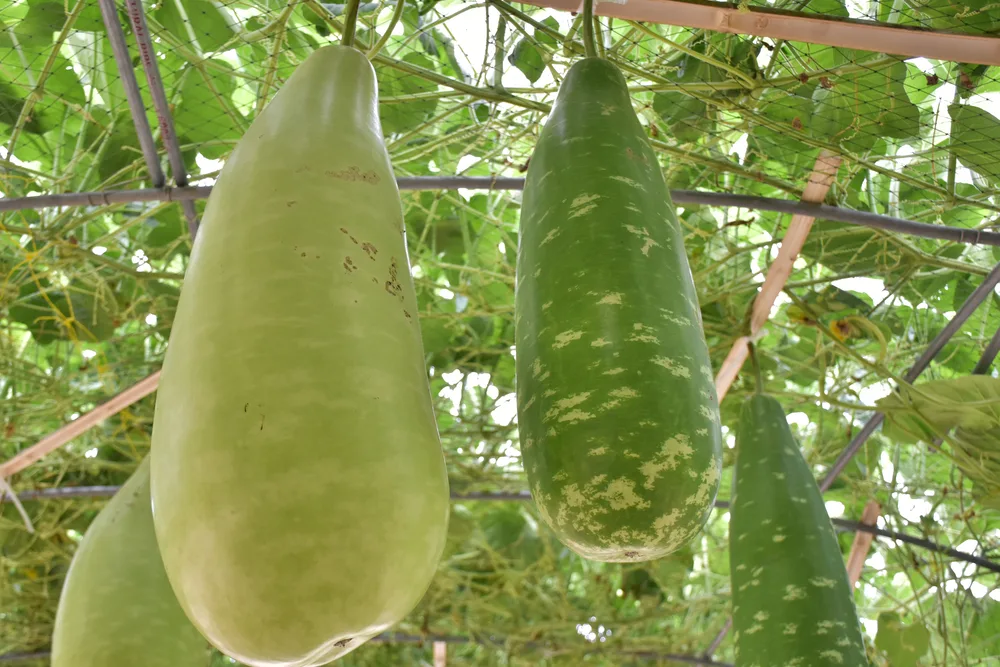
Otherwise known as opo squash or bottle squash, calabashes are actually a variety of gourd, though they are treated like summer squashes.
The fruits are long and green, often growing to 2-4′ or more. They are a prime candidate for trellising. When harvesting for fresh eating, you can cut off just as much as you want while it is hanging on the vine, and come back a few days later for the rest.
Little gem squash
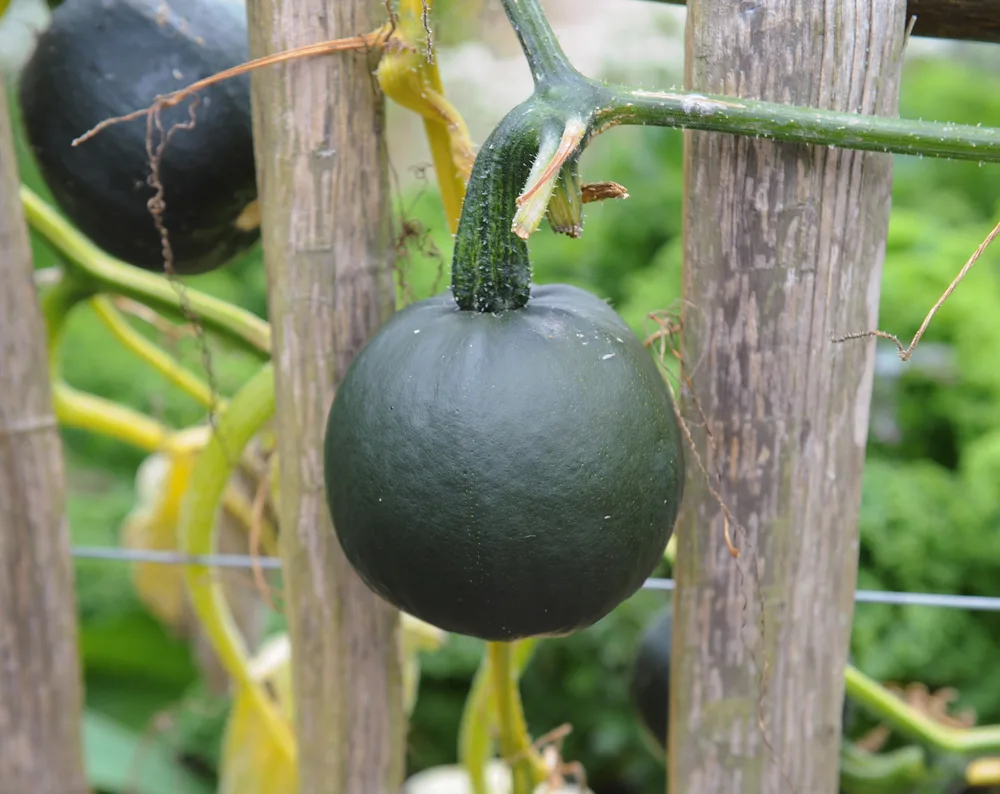
If you are seeking squashes no larger than the size of a cricket or softball, but many of them, then gem squashes may just be the variety for your trellis!
Little gem squashes are great for stuffing – think individual portions – with their dense yellow-orange flesh.
Patty pan squash
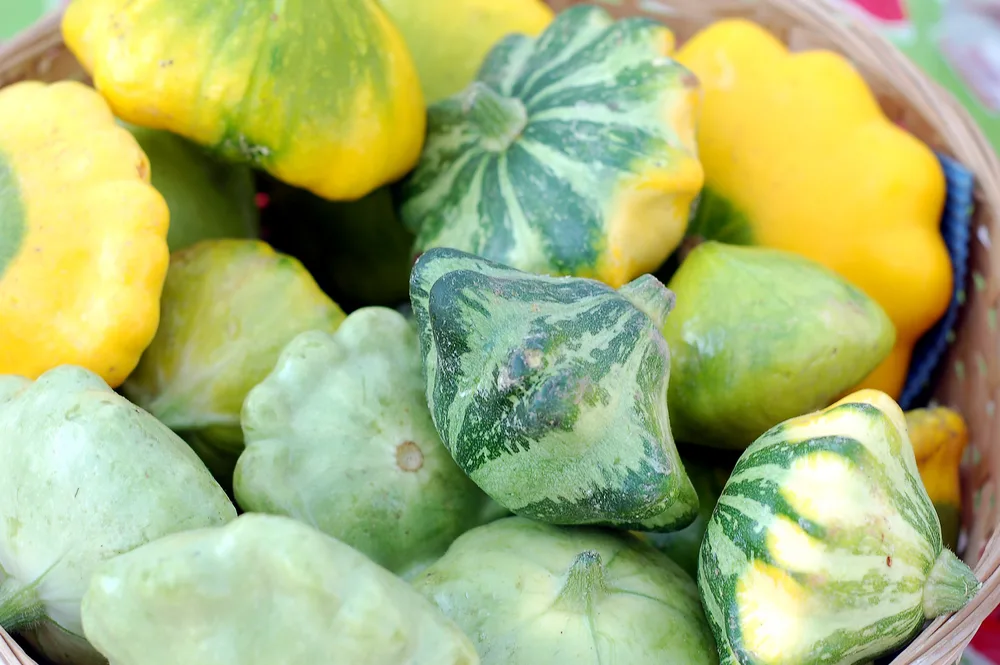
Though patty pans (scalloped squashes) have a semi-bushing growth habit, they can be grown in combination with another winter variety of squash that will dare to reach higher heights. In this way they can help fill in the space of a trellis.
It also makes a great option if you cannot make your garden trellis too tall.
Yellow squash
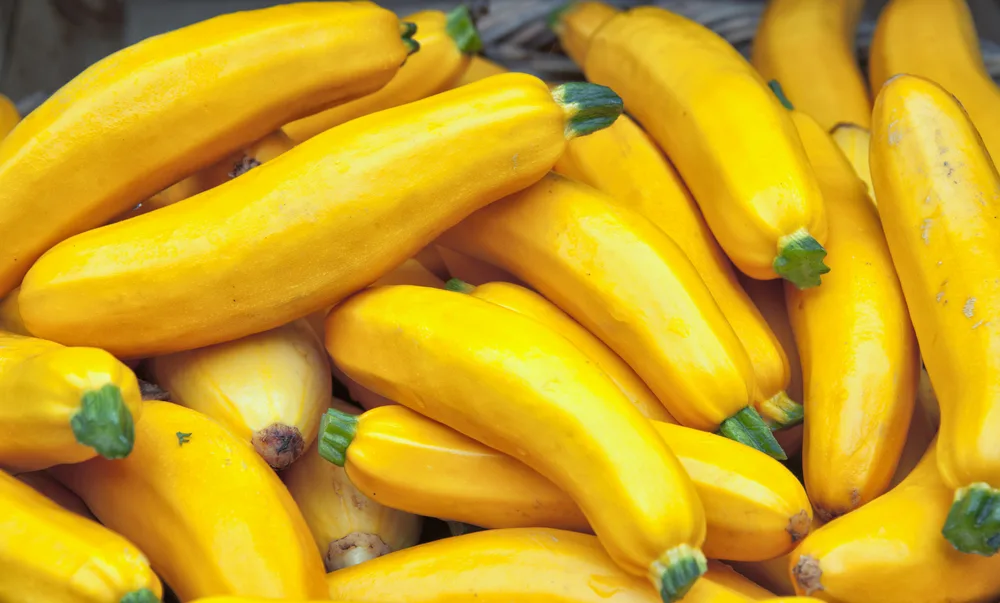
Like zucchini, yellow squash can take over the garden if you go on vacation. And it is totally worth the non-effort that you have to put in it.
Just make sure you are prepared with plenty of recipes and exciting ways to cook it!
Trellising winter squash
Winter squashes typically take 80-110 days to fully ripen, so you will need to adjust your planting times accordingly. You can often sow their seeds as soon as the chances of spring frosts are over, with the caveat that it must be warm enough to survive.
Grow them once and you will quickly find out how quickly they can escape your garden/fence boundaries.
For this reason, learning to grow them vertically will save you lots of growing space. Growing space that is perfect for planting long-lasting perennials.
Acorn squash
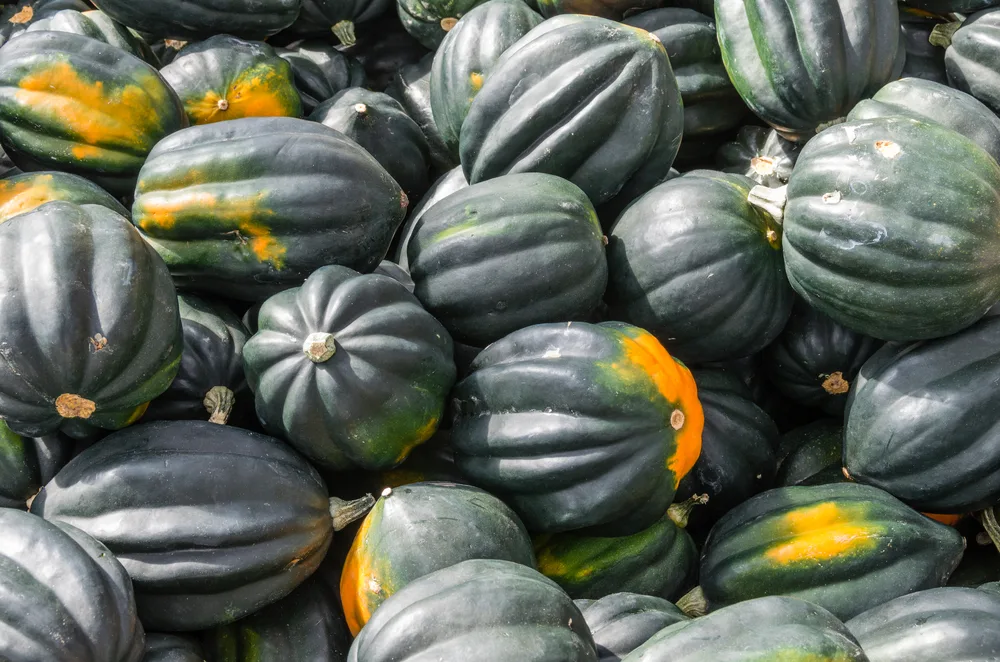
Baked acorn squash with honey and cinnamon is a winter delicacy! Simply cut it in half and roast it in the oven for a dessert worthy of attention.
Or bake it on the savory side with dried garden herbs and a pinch of salt. Both ways are beyond amazing, and while you may be able to buy acorn squash at the store, homegrown is best! Kids will like to grow them and eat them too.
Butternut squash
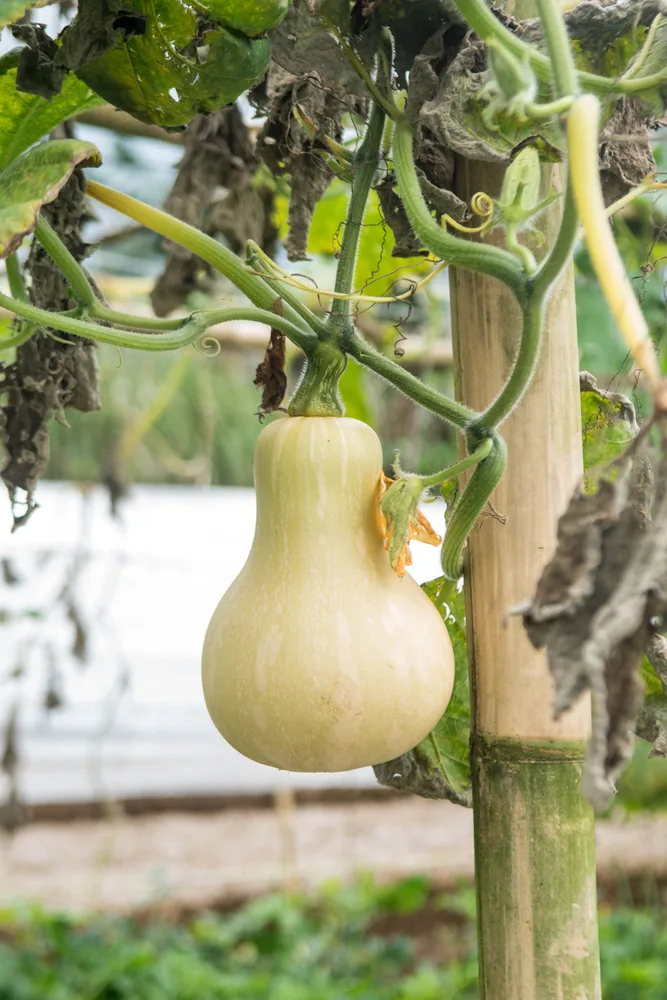
The classic autumn squash that everyone recognizes from a distance – butternut squash.
If you are trying to grow this long-season squash in a colder climate, the seeds will need to be started indoors, so you can harvest the squash at full maturity.
Delicata squash
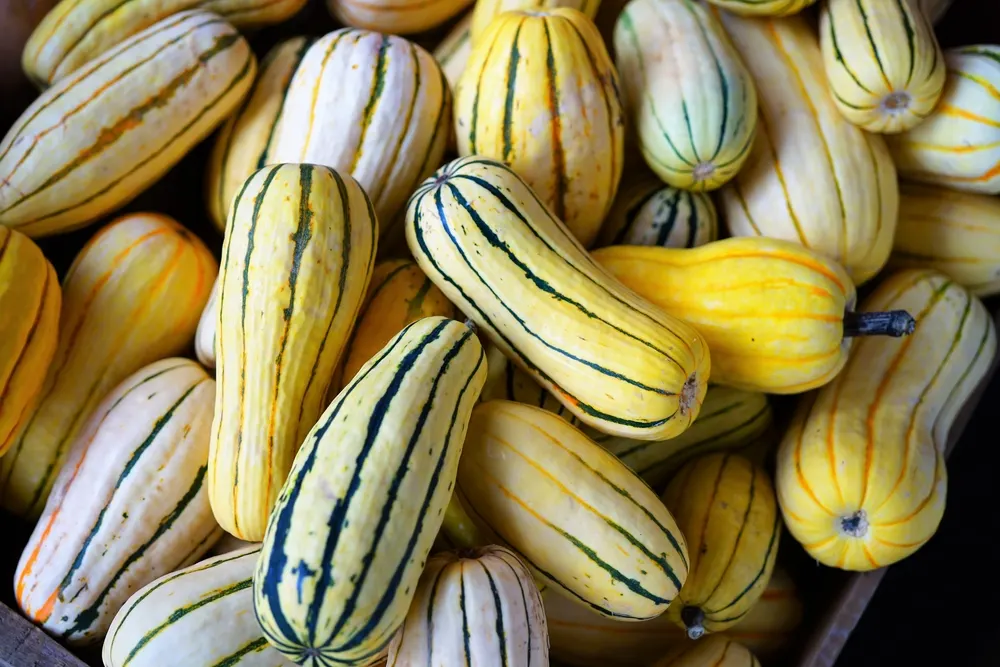
You’ll fall in love with delicata squash the first time you grow it. Not only for the distinct striping and small oblong shape, but for its sweet potato flavor too.
Though you won’t be able to store it as long as a butternut, it can still last a few months into winter, making it the perfect choice for holiday pies.
Sugar pie pumpkin
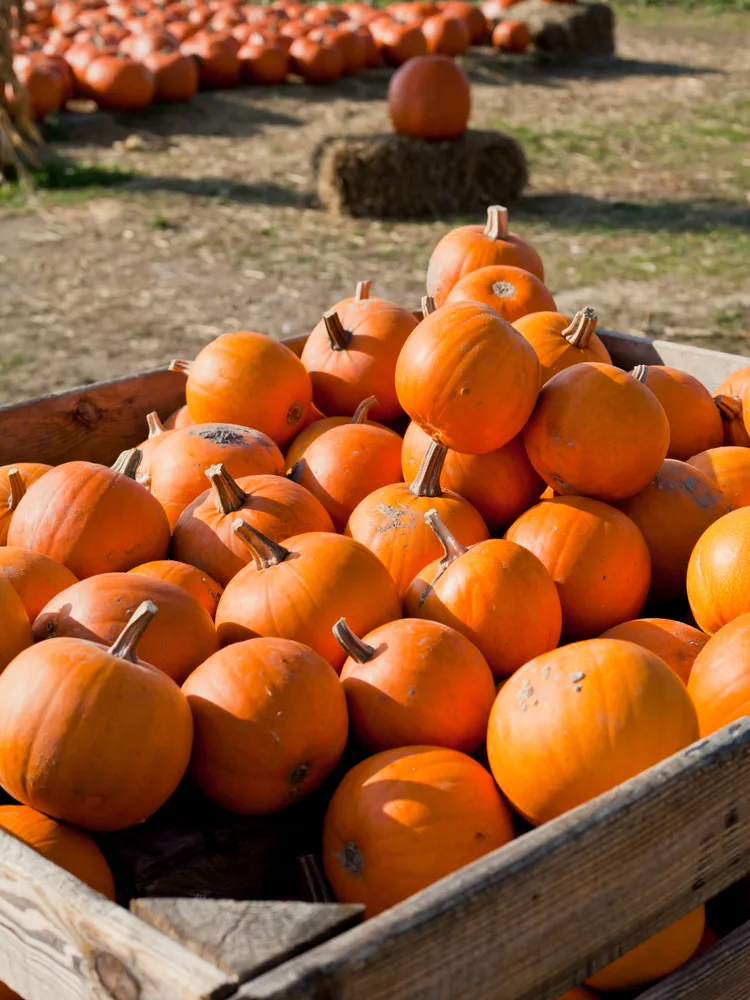
Of course, no garden is complete without a pumpkin or two, though they do take up so much space!
If you really can’t resist the temptation, try growing a sugar pie pumpkin vertically on a trellis and save precious space as you grow beautiful stock for soups, muffins and casseroles.
Water requirements of trellised squash
Squashes are deep-rooted and heavy feeders. For this reason alone, be sure to add enough compost when planting. Shortly after, add a thick layer of mulch over the area to keep moisture in the soil.
As squashes reach for the sky, they will need to send water higher and higher up. Those topmost reaching leaves will inevitably lose more moisture to evaporation from both wind and sun.
When trellised, because the vines are no longer setting out more roots at their vine nodes into the ground, the vines will dry out faster, which makes irrigation a priority when fruiting. In essence, you will need to water more frequently, but you will also be rewarded with a much grander harvest.
And if it is butternut squash pies that you are after all winter long, how many squashes you can store in your cellar is of utmost importance.
Using your trellis for other than squashes
Most members of the Curcurbitaceae family, consisting of pumpkins, squashes, zucchini, melon and gourds, have vining tendencies. Two more plants to consider outside of growing squashes are cucumbers and luffa.
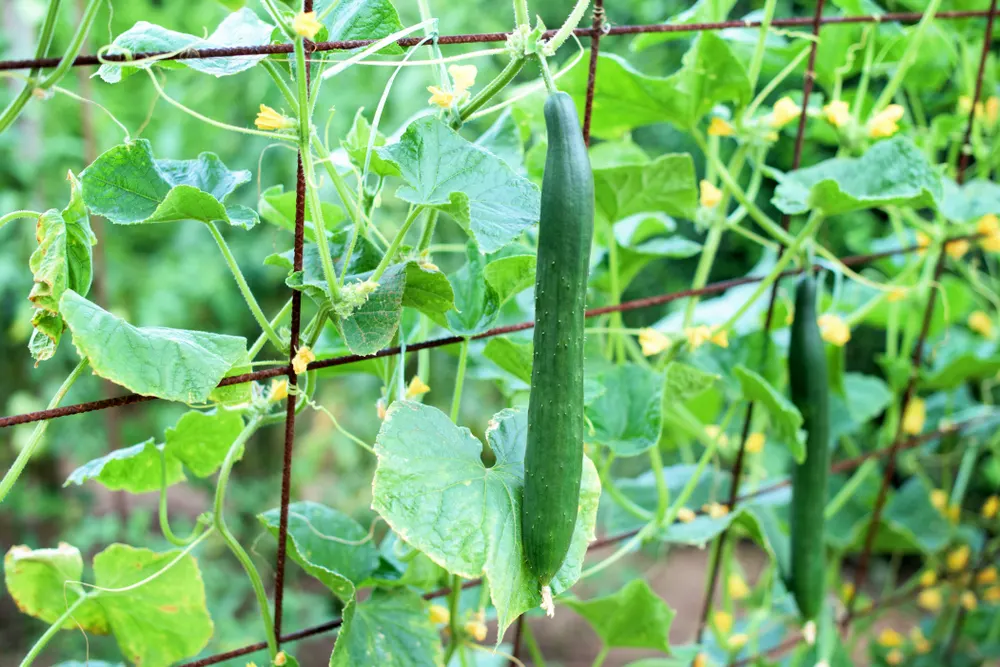
If you have ever experienced problems (disease and yellowing) with growing cucumbers on the ground, why not try growing cucumbers on a simple trellis this season to find if it works better for you. Chances are it will. Plus, it will leave you with more space for root vegetables and herbs.
Another novel vine to grow in the garden is luffa (loofah). It grows the best in hot summers with full sun. If you can successfully grow it into a sponge, it makes a fantastic alternative to plastic.
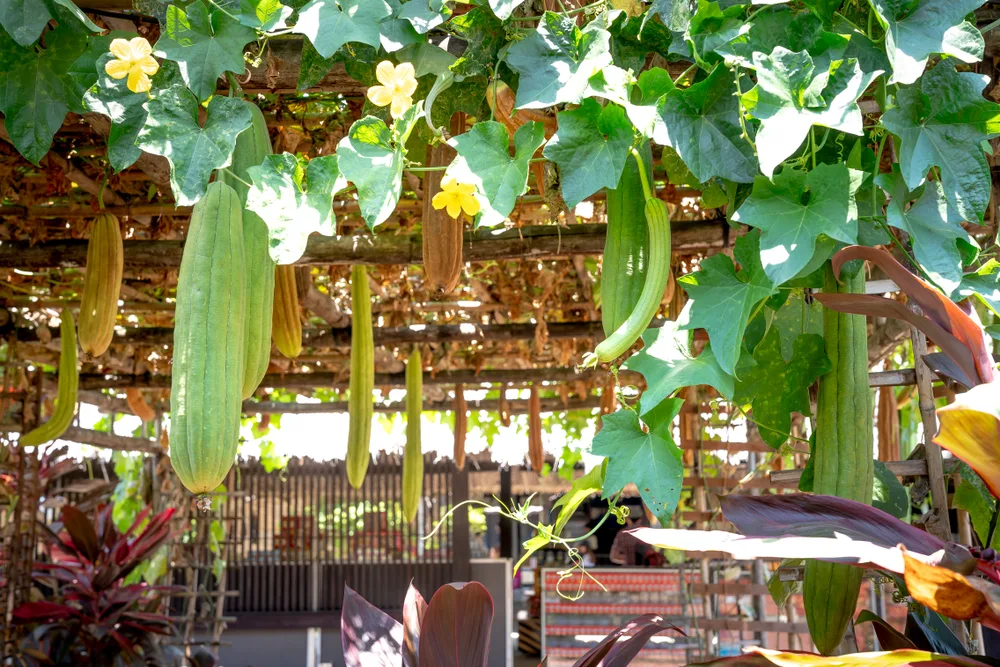
Use it for washing the dishes, add it as a scrubber in your homemade soaps, and have a separate one for the shower.
You can buy open-pollinated luffa seeds here.
They last for years and years in storage, so one good harvest will last a long time!
What will you be trellising this year?
Here’s some inspiring squash trellis photos to give you ideas for creating your own beautiful and productive vertical squash garden.
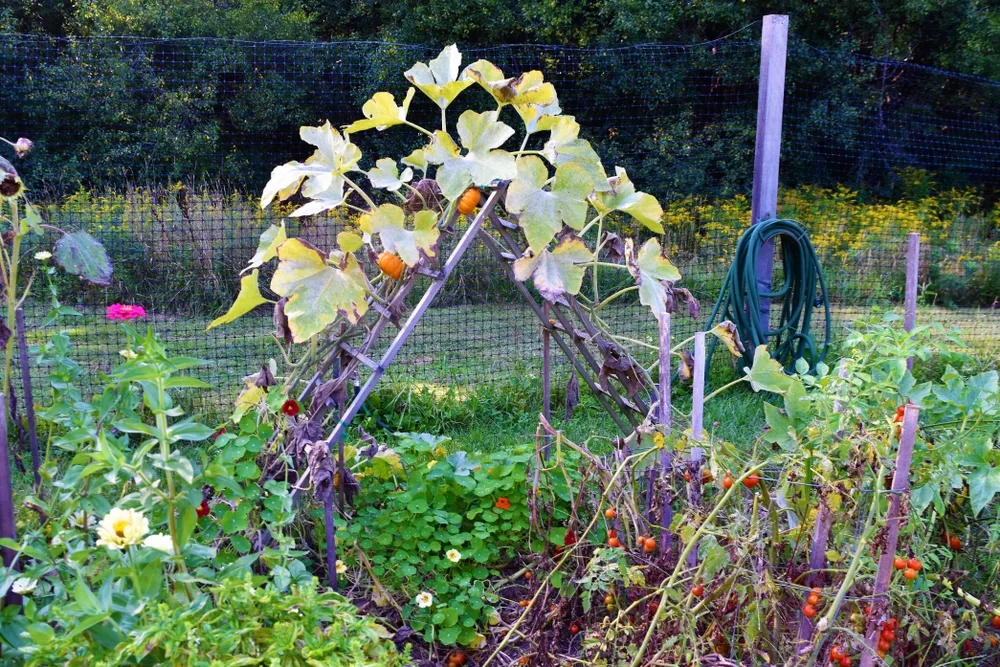

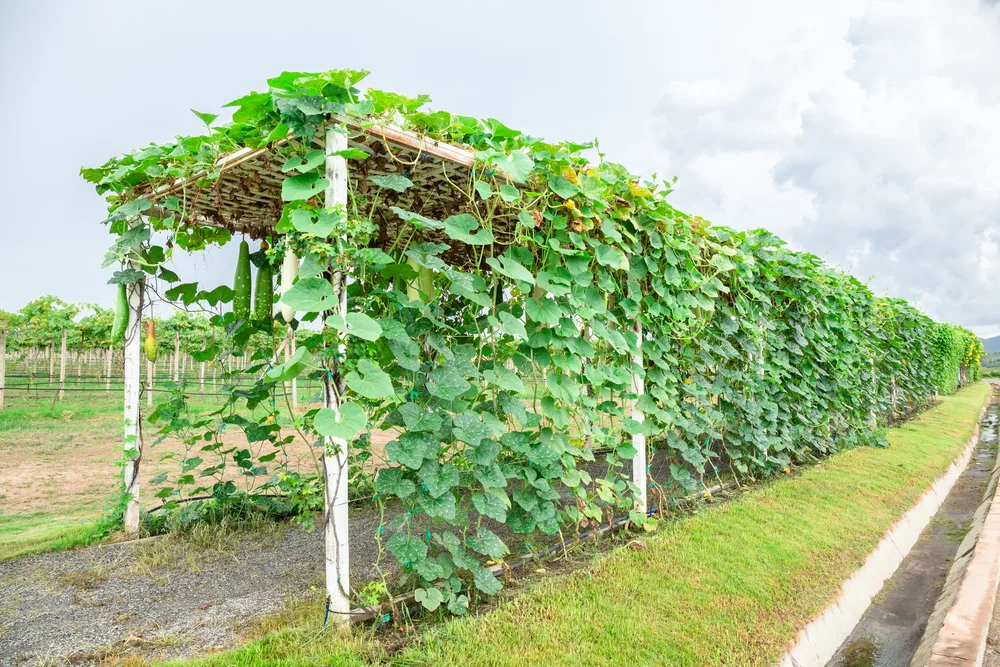
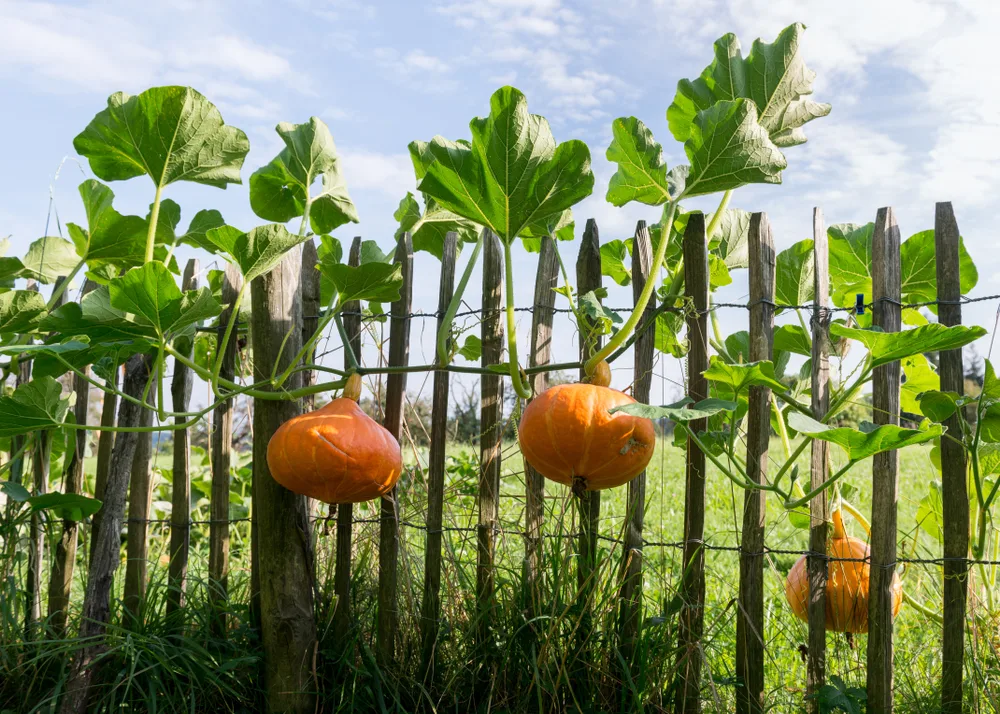
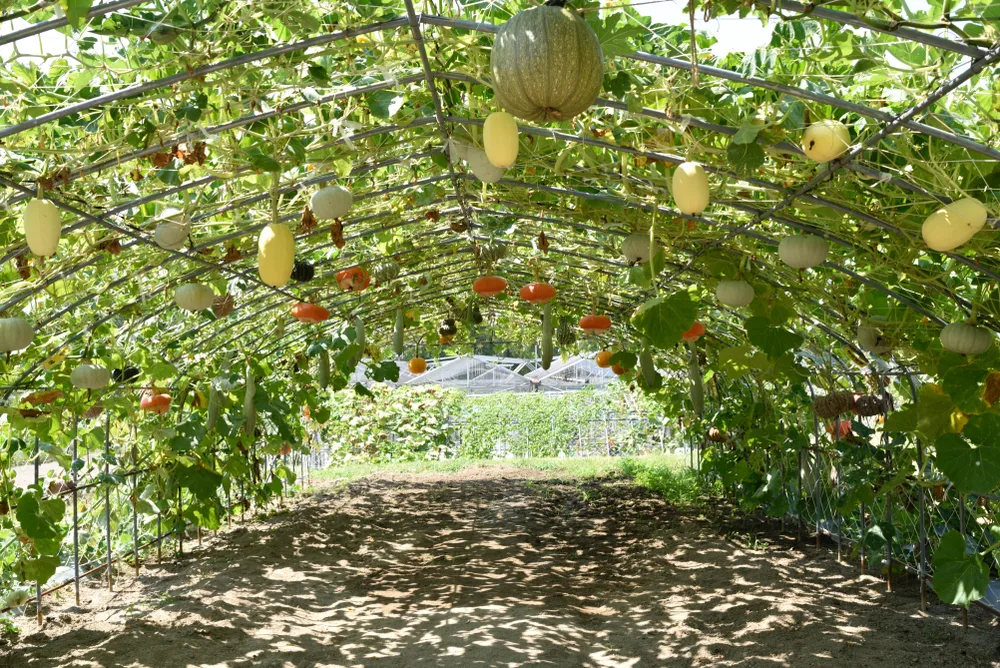
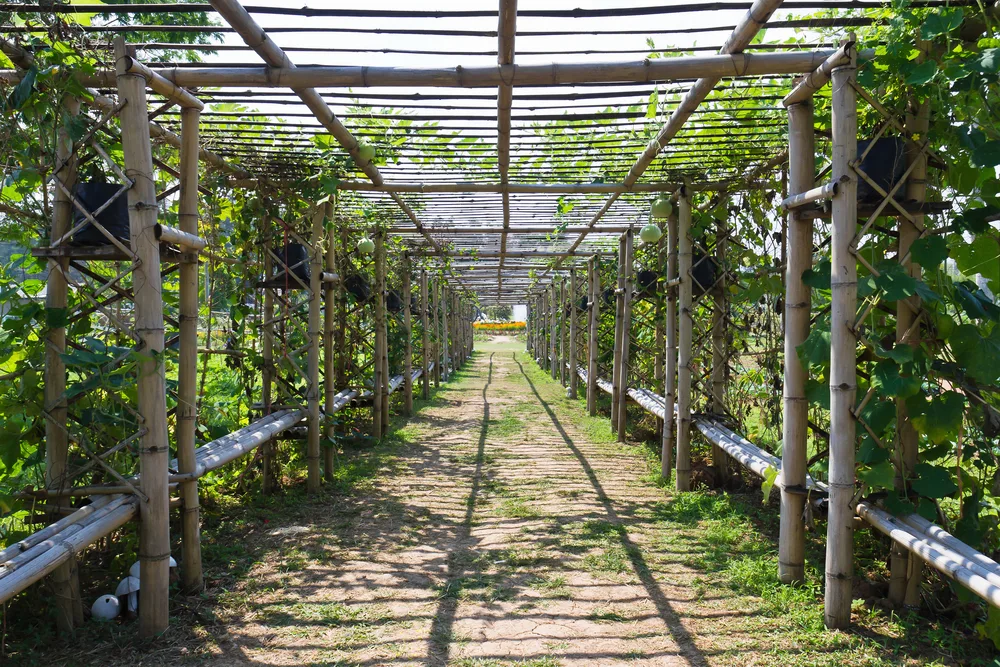
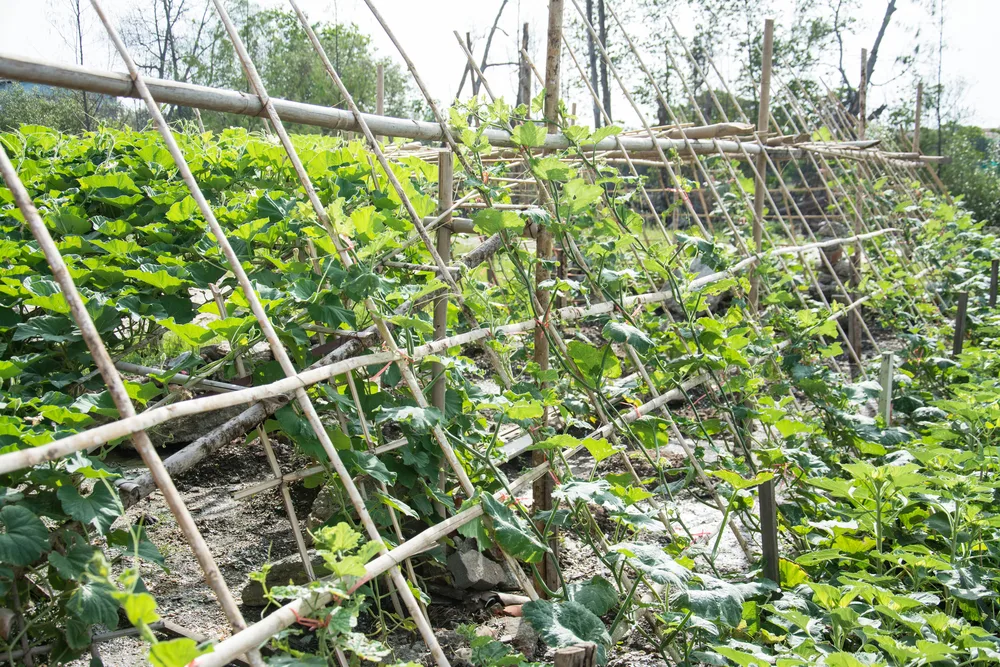
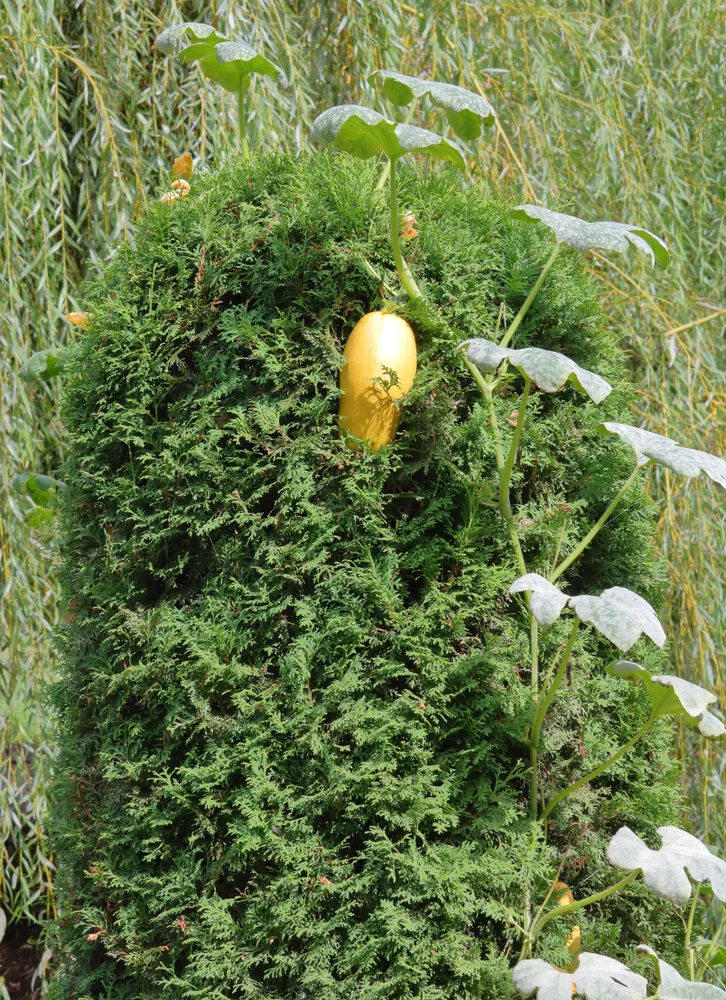
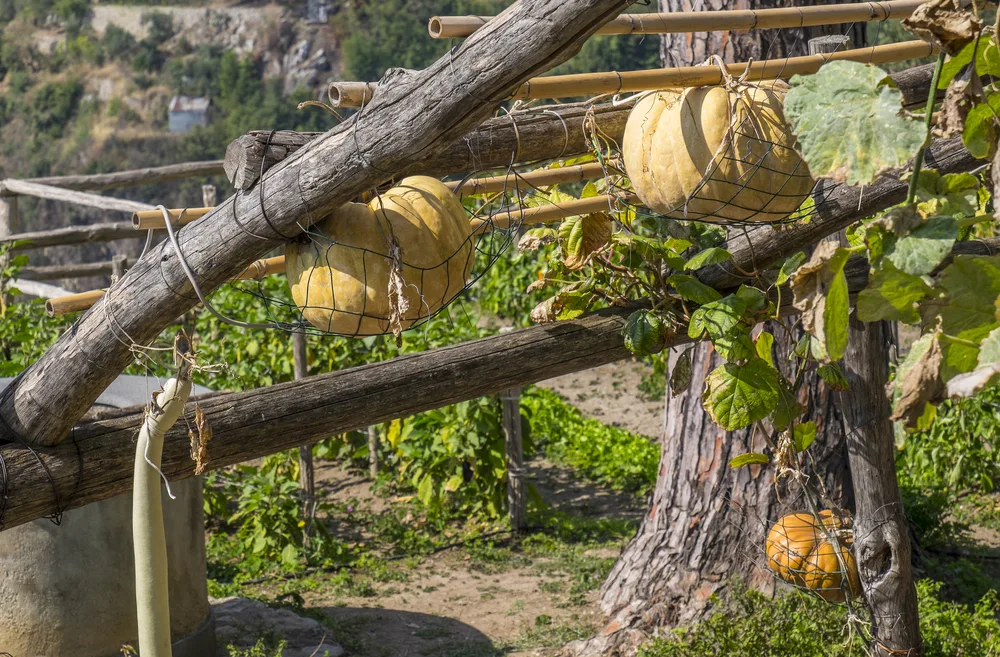

Get the famous Rural Sprout newsletter delivered to your inbox.
Including Sunday musings from our editor, Tracey, as well as “What’s Up Wednesday” our roundup of what’s in season and new article updates and alerts.

